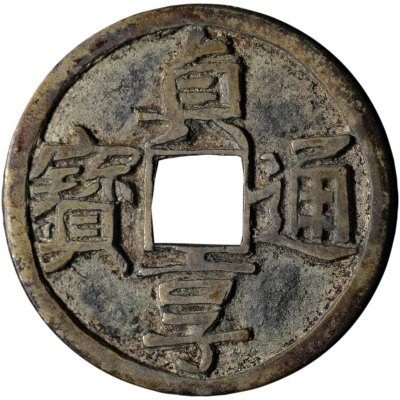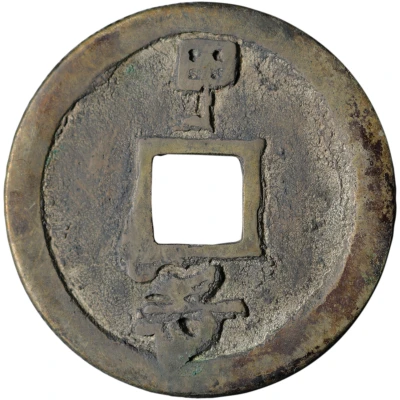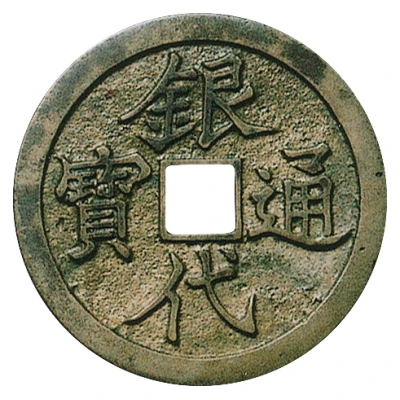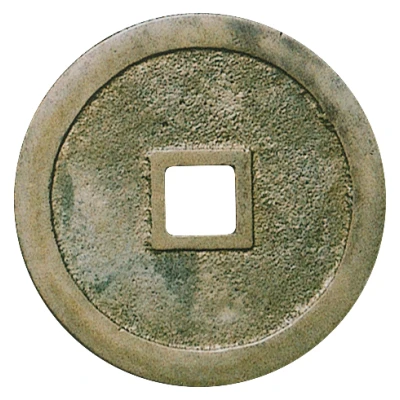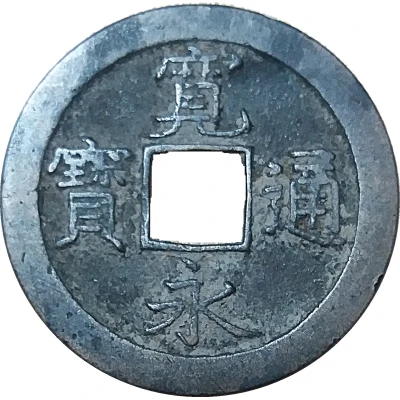
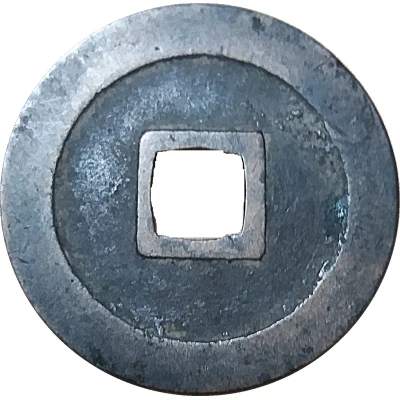

1 Mon "Kan'eitsūhō" new type; copper alloy; blank reverse ND
| Copper | 3.28 g | 25 mm |
| Issuer | Japan |
|---|---|
| Type | Standard circulation coin |
| Years | 1700-1750 |
| Value | 1 Mon |
| Currency | Mon (683-1953) |
| Composition | Copper |
| Weight | 3.28 g |
| Diameter | 25 mm |
| Thickness | 1 mm |
| Shape | Round with a square hole |
| Technique | Cast |
| Orientation | Medal alignment ↑↑ |
| Demonetized | 1954 |
| Updated | 2024-10-05 |
| Numista | N#121454 |
|---|---|
| Rarity index | 17% |
Reverse
Blank, with rim and square center raised.
Edge
Plain
Comment
To distinguish from the old type, the new type will have the legs of "寶" separated, while the old type will have the legs of "寶" connected (look like ス). However, only coins of copper alloy are separated, as some iron alloy coins exist with old-style "寶".
Even after the currency reformation in the Meiji period, copper Kan'eitsūhō coins are still used for 1 Rin, while iron ones cannot be used. Copper Kan'eitsūhō coins are estimated to be circulated until around the middle of the Meiji period. According to the taxation law comes into effect on 1st April 1916, the Rin unit is rounded, making Kan'eitsūhō coins started being disappeared from general circulation.
From 4th April 2010, using of copper Kan'eitsūhō coins are restored in Kan'onji, Kagawa Prefecture as local currency. Shops that accept Kan'eitsūhō will accept them as 30 Yen regardless of 1 Mon or 4 Mon type. The iron ones are not accepted. However, some rare types of Kan'eitsūhō could worth millions of Yen, so please spent the coin with care.
William D. Craig did not separate the old and new type, resulting in the same catalog number C#1.1
David Hartill also lists a few foreign cast coins made like Chinese coins (Amman, Japan, and Korea). The Hartill minting year range is slightly different, however, he says: "Hundreds of variations on the obverse and reverse of this coin are known. Specialist works will give their attributions to mints."
There are endless variations of this type, as the quality of the coin change by the time. Most of the common types will be noted. "Unknown variants" line is recommended when you cannot identify the coins.
________
________
(不旧手)藤沢銭; fukyuu-de fujisawa-sen
1728 大阪難波銭濶縁 ōsaka-nanba-sen KATSUEN; wide rim; 永 with left foot; low 通
Picture: © Images courtesy of Alexandr Prokofyev
Interesting fact
One interesting fact about the Standard circulation coin 1 Mon "Kan'eitsūhō" (new type; copper alloy; blank reverse) ND (1700-1750) from Japan made of Copper weighing 3.28 g is that it was issued during a time of great change in Japan. The Kan'eitsūhō coinage was introduced in 1700, during the reign of Emperor Higashiyama, and it marked a significant shift in Japanese currency. Prior to this, Japan had primarily used Chinese coins, but the Kan'eitsūhō coinage was the first to be minted in Japan and featured a unique design. This coinage also marked the beginning of Japan's transition from a feudal society to a more modern, centralized state.
Price
| Date | Mintage | VG | F | VF | XF | AU | UNC |
|---|---|---|---|---|---|---|---|
| ND (1700) | - | - | - | - | - | - | |
| ND (1736) | - | - | - | - | - | - |
Values in the table are based on evaluations by sales realized on Internet platforms. They serve as an indication only for 1 Mon "Kan'eitsūhō" (new type; copper alloy; blank reverse) ND (1700-1750) coin.
